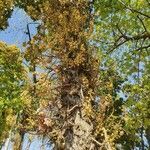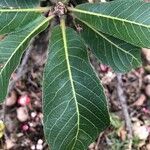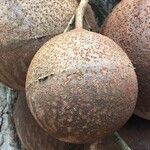This species is easily recognized by the large round fruits of 10-15 cm diam. borne on the branches and trunk. The androecium, bearing numerous sterile stamens, has a more open hood than that of Bertholletia and it is also over the ring of fertile stamens. The leaves of this species are grouped at the ends of the branches in a similar way to many species of Barringtonia.











